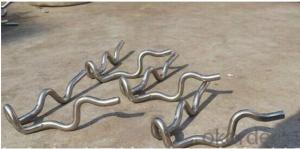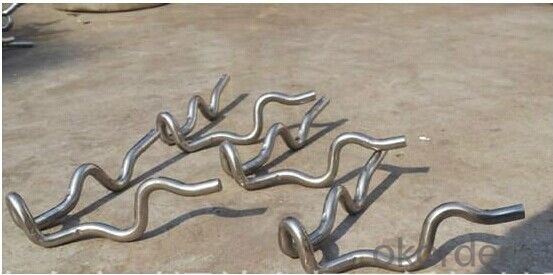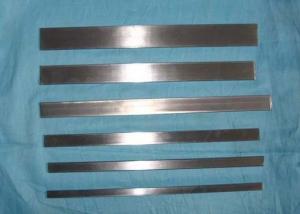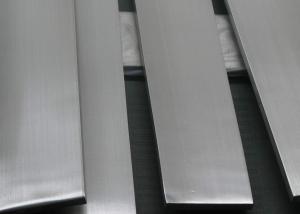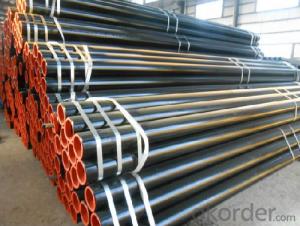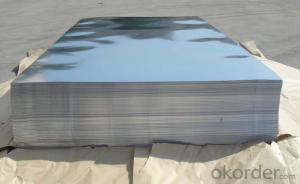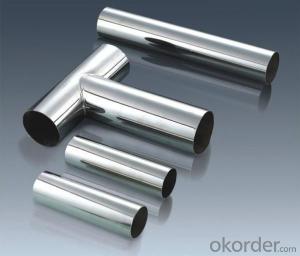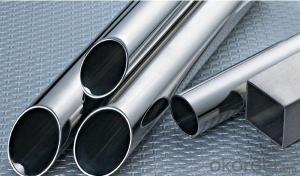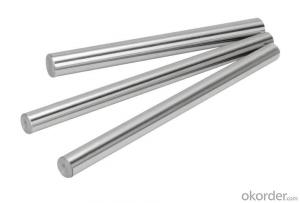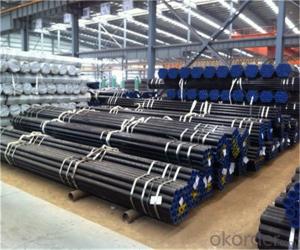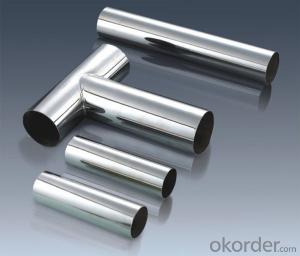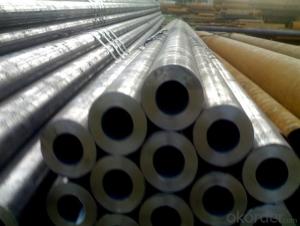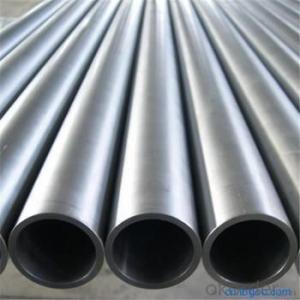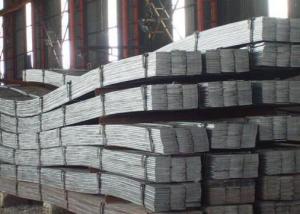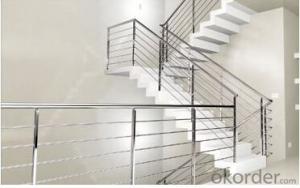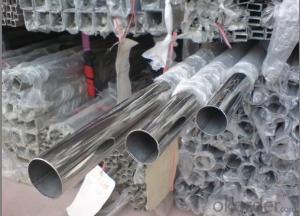Stainless Steel 304 Claw Used in the steel
- Loading Port:
- Qingdao
- Payment Terms:
- TT OR LC
- Min Order Qty:
- 500 set
- Supply Capability:
- 2000 set/month
OKorder Service Pledge
OKorder Financial Service
You Might Also Like
Specifications
stainless steel ss304 pipe price list
OD:6mm-630mm
T:0.3-60mm
Finish: POLISH,ACID,HL,200# polishing, 400 # polished
stainless steel ss304 claw
Stainless steel is a production which not easy rust,acid resistance and corrosion resistance, so it is widely used in light industry,heavy industry,daily necessities and the decoration industry. My company long-term supply stainless steel products, including stainless steel seamless pipes,stainless steel bar and stainless steel sheet. The material have 201,202,301, 309 309S 310, 310S,304,304L, 316, 316L,317, 317L,321,409L, 904L, 410, 430,4Cr13.
claw | ||
material | GB | 10#,20#,45#,20G.16Mn,27SiMn,15CrMoG,12Cr1MoU,20CrMo,35CrMo, 42CrMo, 12Cr1MoVG,Cr5Mo,WB36,BCrMo44,34CrMo4,P5,12Cr |
AISI | 1010,1020,1045,Gr·65 ,API X52,API X 42and so one | |
other | DIN,JIS | |
specification | Out diameter | 6mm-750mm |
Wall thickness | 0.3-75mm | |
Production technology | Hot rolled | |
Cold rolled | ||
Surface treatment | Copper coated | |
Galvanized | ||
other | ||
sorting | Structural pipe, fluid pipe, boiler pipe, oil pipe, gas pipe, API pipe, alloy steel pipe, carbon steel pipe and so on. | |
Application:
Construction field ,ships building industry ,petroleum and chemical industries ,war and electricity industries ,food processing and medical industry, boiler heat exchanger ,machinery and hardware fields |
- Q: What is the difference between bright annealed and annealed pickled stainless steel pipes?
- There are two distinct surface finishes for stainless steel pipes: bright annealed and annealed pickled. Bright annealed pipes undergo annealing, a process that entails heating the pipes to a precise temperature and gradually cooling them. This technique alleviates inner tensions, enhances the steel's ductility, and improves its resistance to corrosion. Following annealing, the pipes are subjected to a bright annealing process. This involves heating the pipes at a high temperature in a controlled atmosphere, followed by rapid cooling. As a result, the pipes acquire a sleek, lustrous, and reflective surface finish. On the contrary, annealed pickled stainless steel pipes also undergo annealing to enhance their properties. However, these pipes undergo pickling after annealing. Pickling involves immersing the pipes in an acidic solution, such as hydrochloric or sulfuric acid, to eliminate any scale, oxides, or impurities present on the steel's surface. This procedure aids in cleaning and purifying the surface, resulting in a subdued, matte finish on the pipes. In conclusion, the primary distinction between bright annealed and annealed pickled stainless steel pipes lies in their surface finishes. Bright annealed pipes possess a smooth, lustrous, and reflective finish, while annealed pickled pipes exhibit a dull, matte finish. The selection between these two finishes is contingent upon the specific requirements and aesthetics of the application.
- Q: What are the factors to consider when selecting stainless steel pipes?
- There are several factors to consider when choosing stainless steel pipes: 1. Take into account the grade of stainless steel. Different grades offer varying levels of corrosion resistance, strength, and durability. It is crucial to select the appropriate grade based on the specific application and environmental conditions. 2. Ensure that the size and dimensions of the stainless steel pipes are suitable for the intended use. Consider factors such as inner diameter, outer diameter, wall thickness, and length to guarantee a proper fit and compatibility with the existing system. 3. Evaluate the corrosion resistance of the stainless steel pipes. While stainless steel is known for its excellent corrosion resistance properties, different grades provide varying levels of protection. Take into account the exposure to corrosive substances and choose a grade that can withstand the specific environment. 4. Consider the pressure and temperature requirements. Stainless steel pipes are commonly used in high-pressure and high-temperature applications. It is crucial to select a grade that can handle the required pressure and temperature without compromising the pipe's structural integrity. 5. Assess the fabrication and installation requirements. When choosing stainless steel pipes, take into consideration the ease of fabrication and installation. Some grades may require special welding techniques or pre-fabrication processes, so it is important to evaluate the feasibility and cost-effectiveness of such requirements. 6. Keep the cost in mind. The cost of stainless steel pipes can vary depending on the grade, size, and other factors. It is important to consider the budget and find a balance between cost and desired quality and performance. 7. Ensure compliance with regulatory and industry standards. Depending on the application, there may be specific standards and regulations that need to be met. Make sure that the selected stainless steel pipes comply with these standards to ensure safety and reliability. By considering these factors, one can make an informed decision when selecting stainless steel pipes that meet the specific requirements of their application.
- Q: Are stainless steel pipes resistant to corrosion?
- Yes, stainless steel pipes are highly resistant to corrosion. This is due to the presence of chromium in stainless steel, which forms a passive layer on the surface of the pipe. This passive layer acts as a protective barrier, preventing the metal underneath from coming into contact with corrosive substances. The chromium content in stainless steel is typically at least 10.5%, which is higher than other types of steel, and this helps to enhance its corrosion resistance. Stainless steel pipes are widely used in various industries such as construction, oil and gas, and automotive, where corrosion resistance is essential to ensure the longevity and integrity of the pipes.
- Q: Can stainless steel pipes be used for mining applications?
- Yes, stainless steel pipes can be used for mining applications. Stainless steel is known for its excellent corrosion resistance, which makes it highly suitable for environments with high moisture, chemicals, and abrasion. In mining applications, stainless steel pipes are commonly used for conveying various fluids, such as water, slurry, and chemicals, as well as for ventilation systems and structural support. Additionally, stainless steel pipes have high strength and durability, which are crucial for withstanding the harsh conditions often encountered in mining operations. Overall, stainless steel pipes offer numerous advantages and are a reliable choice for mining applications.
- Q: Are stainless steel pipes suitable for hygienic applications?
- Yes, stainless steel pipes are suitable for hygienic applications. Stainless steel is widely used in industries such as food processing, pharmaceuticals, and dairy, where maintaining cleanliness and preventing contamination is crucial. Stainless steel pipes have several properties that make them ideal for hygienic applications. Firstly, stainless steel is highly resistant to corrosion, which is important for maintaining hygiene and preventing the growth of bacteria or other pathogens. It does not rust or corrode easily, even when exposed to various chemicals and cleaning agents used in hygienic environments. This resistance to corrosion ensures the integrity of the pipes and prevents any contamination from occurring. Secondly, stainless steel has a smooth, non-porous surface that is easy to clean and sanitize. The smoothness of the surface prevents the accumulation of dirt, bacteria, or other particles, making it easier to maintain a hygienic environment. Stainless steel pipes can be easily cleaned using various cleaning methods, including steam, high-pressure water, or chemical cleaning agents. Furthermore, stainless steel is a durable and long-lasting material. It can withstand high temperatures and pressures, making it suitable for a wide range of hygienic applications. Stainless steel pipes can be used for transporting fluids, gases, or other materials without compromising their hygienic properties. In addition, stainless steel is a non-reactive material, meaning it does not react with the substances it comes into contact with. This property is important for preventing any contamination or alteration of the substances being transported through the pipes. Overall, stainless steel pipes are highly suitable for hygienic applications due to their corrosion resistance, smooth surface, durability, and non-reactive properties. They provide a reliable and hygienic solution for industries where cleanliness and prevention of contamination are of utmost importance.
- Q: Are stainless steel pipes suitable for fire protection systems?
- Indeed, fire protection systems find stainless steel pipes to be a suitable option. The reason lies in the fact that stainless steel possesses remarkable resistance against corrosion, a trait of utmost importance for fire protection systems, which frequently encounter water or other corrosive substances. The ability of stainless steel pipes to endure high temperatures while preserving their structural integrity enhances their dependability for the transportation of water or other fire suppressants. Furthermore, the durability and extended lifespan of stainless steel pipes contribute to a decrease in the necessity for frequent replacements or repairs. All in all, stainless steel pipes are widely favored in fire protection systems due to their reliability, resistance to corrosion, and durability.
- Q: Are stainless steel pipes suitable for sanitary applications?
- Yes, stainless steel pipes are highly suitable for sanitary applications. Stainless steel is known for its excellent corrosion resistance, durability, and hygienic properties, making it an ideal choice for environments that require cleanliness and sanitation, such as food processing plants, pharmaceutical facilities, and hospitals. Stainless steel pipes are non-porous, which means they do not absorb or retain bacteria, contaminants, or odors. They are also easy to clean and maintain, ensuring the highest level of hygiene. Additionally, stainless steel pipes can withstand high temperatures and pressures, making them suitable for a wide range of sanitary applications.
- Q: What are the limitations of using stainless steel pipes?
- The utilization of stainless steel pipes is associated with several limitations. To begin with, stainless steel pipes are inclined to be pricier in comparison to materials like PVC or copper. This aspect can render them less viable for projects with financial constraints. Moreover, the installation of stainless steel pipes can be more challenging and necessitate the use of specialized tools and equipment. Consequently, this can lead to an increase in both the overall installation time and cost. Another constraint is that stainless steel pipes are unsuitable for the transportation of certain corrosive chemicals or gases. There is a possibility of a chemical reaction occurring with certain substances, resulting in corrosion and potential harm to the pipes. In such scenarios, alternative materials such as plastic or lined pipes may be more suitable. Additionally, stainless steel pipes may possess limitations in terms of their resistance to temperature and pressure. Although they can withstand relatively high temperatures and pressures, extreme conditions may require the utilization of more robust materials. Furthermore, stainless steel pipes exhibit lower thermal conductivity compared to other materials, implying that they are not as efficient in transferring heat. This can be a limitation in certain heating or cooling applications that require rapid heat transfer. Lastly, stainless steel pipes are susceptible to expansion and contraction with changes in temperature. Consequently, the use of expansion joints or other measures may be necessary to accommodate these movements and avoid potential damage. In conclusion, although stainless steel pipes offer numerous advantages such as durability and resistance to corrosion, it is crucial to carefully consider their limitations before selecting them for a specific project.
- Q: Are stainless steel pipes suitable for mining industries?
- Stainless steel pipes are extensively utilized and deemed appropriate for the mining sector. The mining industry necessitates materials that can withstand harsh and corrosive environments, and stainless steel is widely recognized for its exceptional resistance to corrosion. This quality is especially significant in mining operations as pipes are constantly exposed to various chemicals, minerals, and water, which can hasten the corrosion procedure. Moreover, stainless steel pipes possess remarkable durability and can endure extreme temperatures, rendering them suitable for the demanding conditions encountered in mining activities. Furthermore, these pipes offer elevated strength and reliability, ensuring the secure and efficient transportation of fluids, gases, and slurries throughout the mining process. Consequently, stainless steel pipes are the preferred choice in the mining sector due to their corrosion resistance, durability, and strength, establishing them as a dependable and long-lasting alternative for mining operations.
- Q: 304L stainless steel pipe can withstand 0.1MPA?
- If you want to know how much pressure the steel pipe is under, you need to know the type of the stainless steel pipe.Pressure calculation formula of stainless steel management: pressure MPA=, tensile strength X40%X2X, wall thickness / outer diameterBut from my experience, generally speaking, stainless steel tubes can withstand 0. 1MPA. Unless it is used very thin stainless steel tube wall decoration.
Send your message to us
Stainless Steel 304 Claw Used in the steel
- Loading Port:
- Qingdao
- Payment Terms:
- TT OR LC
- Min Order Qty:
- 500 set
- Supply Capability:
- 2000 set/month
OKorder Service Pledge
OKorder Financial Service
Similar products
Hot products
Hot Searches
Related keywords
